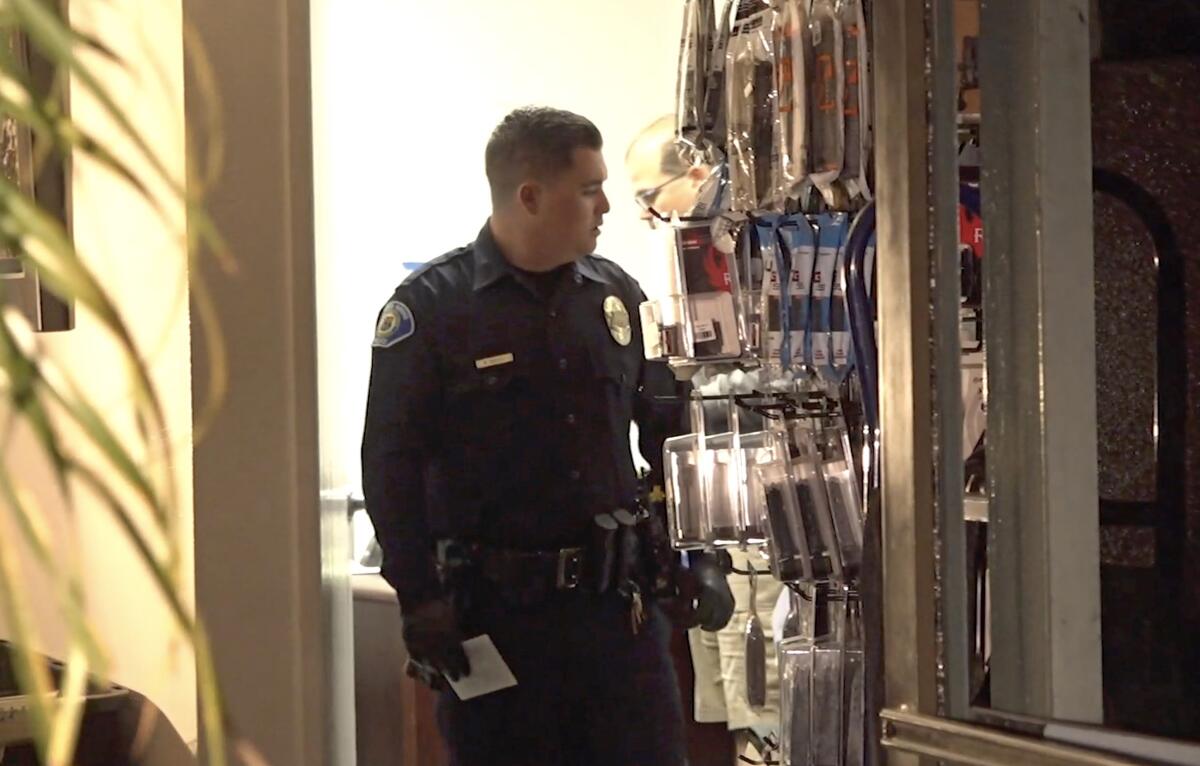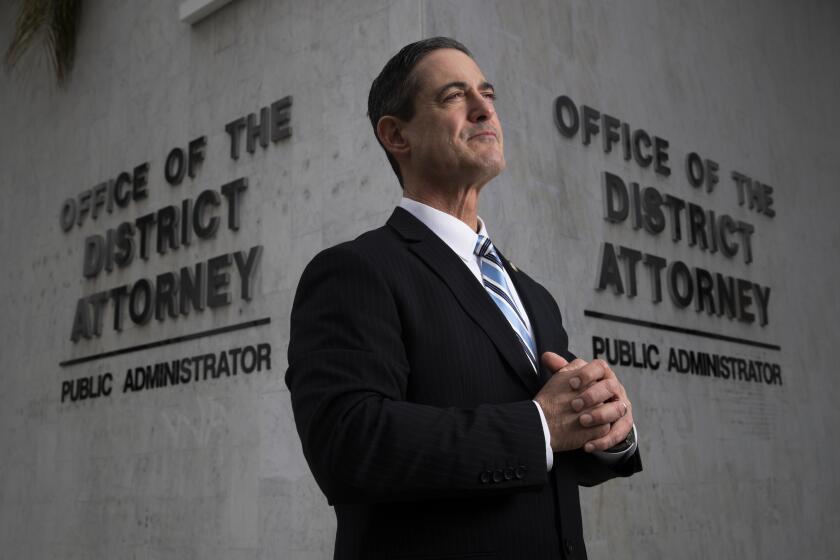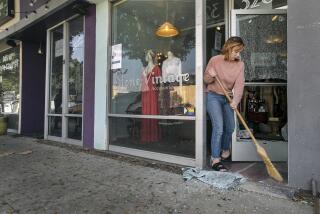Editorial: Yes, there are problems with Prop. 47 and $0 bail. Just not what you think

It wasn’t Los Angeles police union leader Jamie McBride’s warning to visitors to stay out of town during the holidays that was so startling, or his claim that his more than 9,500 police department colleagues can’t protect them. Nor was it his unoriginal quips about L.A. being like a lousy 2013 movie in which people get a day each year to kill one another without consequences.
The surprising thing was that his comments and others like them keep getting so much play on news programs here and around the country. There seems to be an enduring hunger to blame any crime increases on criminal justice reforms like Proposition 47 and zero-dollar bail — despite numbers and other data that thoroughly debunk those claims.
Los Angeles is indeed suffering from an increase in homicides, and it is not to be taken lightly. Killing has risen sharply here, beginning in the midst of the pandemic.
But murder is hardly an only-in-L.A. phenomenon. It has risen just as much in most U.S. states and cities regardless of whether they are led by old-school tough-on-crime leaders or reform-oriented officials.
Meanwhile, robbery and burglary in L.A. have declined since 2019, continuing a historic decease in crime rates, notwithstanding recent high-profile “smash and grab” thefts at retail stores.
In the statute books, California has changed sentencing policies to make them more rational and just, and to ensure that costly prison beds are used for only the most serious criminals.
Criminal justice reforms can appear threatening or confusing to people who have spent their entire careers steeped in tough-on-crime rhetoric. And increases in crime understandably make residents nervous about their quality of life and safety, and fearful of a general breakdown of law and order.
So it’s worth reviewing the facts about the two most common scapegoats among the last decade’s worth of reforms.
Begin with Proposition 47, the ballot measure adopted by California voters in 2014 to reduce a handful of felonies to misdemeanors. At issue is the portion that raised the dividing line for thefts to $950, up from the previous $450 in place since the 1980s. Steal items worth less than that and it’s a misdemeanor, punishable by up to a year in jail. Steal more and it’s a felony, punishable by longer terms.
Officials who had become used to the lower line say thieves now rush to California to take advantage of the new threshold.
But here are the facts. Some of the most conservative, tough-on-crime states had higher dividing lines than California even before Proposition 47 passed. Texas was at $1,500. It has since raised the line to $2,500, matching South Carolina. Most states are now at $1,000 or more, so even at $950, California’s threshold is now among the toughest third of states. No one’s rushing here because “Purge”-like crime sprees are easier here than anywhere else.
California’s emergency zero-dollar bail order does not force officials to turn criminals loose on the public.
The reason for adjusting the line upward is inflation. If the price of goods rises but the threshold does not, the same thefts that were once misdemeanors become felonies and prisons become overcrowded even as property crime drops. That’s what happened in California beginning in the 1980s, when lawmakers stopped raising the threshold.
But now we’re stuck again, this time at $950, as the cost of goods continues to rise.
The problem with Proposition 47 is not that the threshold is too high. It’s not. The problem is that there is no automatic inflation adjuster.
The other big bogeyman, zero-dollar bail, was adopted by courts as an emergency measure in the early weeks of the pandemic so that jails — already COVID-19 danger zones — wouldn’t fill up with accused people, vulnerable to infection, who were merely waiting for bail hearings or trial.
Critics sometimes lose track of the distinction between pretrial detention — holding a person in jail while awaiting trial despite the presumption of innocence — and bail, a monetary payment meant to get people out, not keep them in. Prosecutors and judges so often set unaffordable bail that unnecessary pretrial detention is now the norm. Yet the U.S. Supreme Court ruled more than three decades ago that “In our society liberty is the norm, and detention prior to trial or without trial is the carefully limited exception.”
Earlier this year, the California Supreme Court ruled that unaffordable bail violates the state Constitution.
So the question is not whether bail is too low, and the solution is not to increase it. The question is whether the detained person would pose an unacceptable danger to society if released. Under zero-dollar-bail, courts and prosecutors already can — and should, and do — hold defendants accused of murder, rape and other dangerous felonies (including, by the way, so-called smash-and-grab robberies). Claims that bail policies allow dangerous felons to commit their crimes repeatedly and with impunity are simply false.
Several studies have examined the effect of policies to release people without bail pending trial, or to not even charge misdemeanors at all, in several “reform” jurisdictions. They conclude that the “progressive” policies may reduce crime and that unnecessary jail makes people more likely to commit future crimes because it severs their links with family and employment, making them more unstable and more desperate.
The real problem with zero-dollar bail is that it is based on the presumption that some amount of money should be the determining factor in whether a person is jailed pending trial. A person’s wealth or poverty has no legitimate role in determining whether they should be held in jail.
The real reason that McBride and the Los Angeles Police Protective League say they can’t protect tourists has nothing to do with Proposition 47 or zero-dollar bail, even if those reforms rub them the wrong way. It is because they are entering the city’s budget season and are seeking leverage for better funding. Meanwhile, here and elsewhere, pundits and politicians use reforms as a political wedge to keep Americans divided, when instead they should be using data to develop, and stick with, policies that keep us safe.
More to Read
A cure for the common opinion
Get thought-provoking perspectives with our weekly newsletter.
You may occasionally receive promotional content from the Los Angeles Times.











